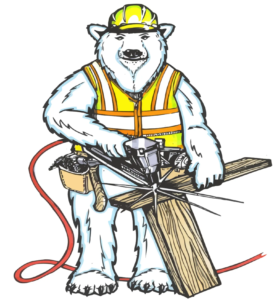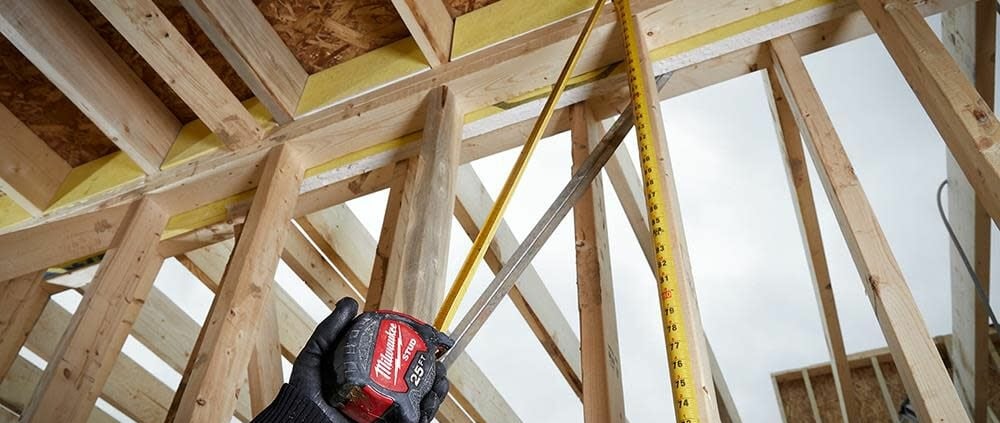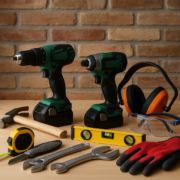What You Need to Know
When it comes to measuring tools, few are as essential and versatile as the tape measure. Whether you’re a seasoned contractor or a DIY enthusiast, having a reliable tape measure is crucial for getting precise measurements in any project. In this guide, we’ll explore everything you need to know about tape measures, from types and features to tips on how to use them effectively.
What Is a Tape Measure?
A tape measure is a flexible ruler used to measure distance. Made from materials like fiberglass, cloth, or metal, a tape measure can easily retract into a compact housing, making it easy to carry and store. This simple yet effective tool is a staple in construction, woodworking, and various other fields where accurate measurements are needed.
Types of Tape Measures
There are several types of tape measures, each designed for specific tasks. Let’s take a closer look at some of the most common ones:
1. Standard Tape Measure
- The most commonly used tape measure, often retractable with a metal blade marked with inches and centimeters.
- Best For: General construction, home improvement projects, and DIY.
2. Fiberglass Tape Measure
- This tape is made from flexible fiberglass, making it durable and resistant to stretching.
- Best For: Landscaping, long-distance measuring, and outdoor projects.
3. Measuring Tape with Magnetic Tip
- A standard tape measure with a magnetic tip that sticks to metal surfaces, allowing for hands-free measuring.
- Best For: Metalworking, electrical work, and framing.
4. Digital Tape Measure
- A modern version that digitally displays measurements for precise accuracy.
- Best For: Professional contractors, engineers, and architects who need precise measurements quickly.
Key Features to Look For in a Tape Measure
Not all tape measures are created equal. Here are some important features to consider when choosing the right tape measure:
1. Blade Length and Width
- Blade Length: Most tape measures range from 12 to 35 feet. Choose a length based on your typical project needs.
- Blade Width: A wider blade is easier to read and stays extended longer without bending.
2. Durability
- Look for a tape measure with a durable housing and a blade made from materials like stainless steel or nylon-coated steel, which are rust-resistant.
3. Locking Mechanism
- A tape measure with a reliable locking mechanism will hold the blade in place, making it easier to take precise measurements.
4. Ergonomic Design
- A comfortable grip, lightweight design, and smooth retraction will make your measuring tasks easier and more efficient.
How to Use a Tape Measure Effectively
Using a tape measure correctly is key to ensuring accurate measurements. Here are a few tips to keep in mind:
1. Start from the Right End
- Always ensure that you are starting from the correct end of the tape. Most tapes have a hook or tab at the end to secure the tape to the edge of a surface for accurate measurement.
2. Keep the Tape Straight
- Avoid twisting or bending the tape as this can lead to inaccurate measurements. For longer distances, use a helper or secure the tape’s end.
3. Use the Hook
- The hook at the end of most tape measures is designed to grab onto surfaces, allowing for easy one-person use. It can also adjust slightly to compensate for the thickness of the hook itself.
4. Use Measurement Markings
- Tape measures often include special markings, such as red numbers every 16 inches, which are helpful for framing or spacing studs in construction.
Common Uses of a Tape Measure
The tape measure is incredibly versatile and can be used in countless applications. Here are just a few ways you might use one:
- Construction Projects: Measure walls, windows, and floors for precise cutting and placement of materials.
- Furniture Making: Get accurate dimensions for cutting wood and fabric.
- Home Improvement: Measure rooms, fixtures, and appliances to ensure a perfect fit for renovations.
- Crafting: From sewing to model building, accurate measurements are key to making sure everything fits.
How to Care for Your Tape Measure
To extend the life of your tape measure, proper care is essential. Here are a few maintenance tips:
- Keep It Clean: After using your tape measure, especially outdoors, wipe it down to remove dirt and moisture that can cause rust.
- Retract Slowly: Don’t let the tape snap back quickly into its housing, as this can damage the blade and the locking mechanism.
- Store It Properly: Store your tape measure in a cool, dry place. Avoid leaving it in areas prone to moisture or extreme temperatures.
Conclusion
The tape measure is one of the most important tools in any toolkit. Whether you’re building a house, installing new furniture, or simply measuring a space for a new appliance, having a reliable tape measure is essential for accuracy. By understanding the different types of tape measures, key features to look for, and how to use one effectively, you can ensure that every measurement you take is precise.
For a wide selection of high-quality tape measures that suit all your project needs, check out our tape measure collection today
Top 3 Brands
1. Stanley
Stanley is one of the most recognized names in the tape measure industry. Known for their Stanley PowerLock and FatMax series, Stanley tape measures are built for durability and precision. The FatMax is particularly popular due to its wide blade, long standout (how far the tape can extend without bending), and rugged design.
2. Milwaukee
Milwaukee is another trusted name in power tools and tape measures. Their Milwaukee Magnetic Tape Measure series is a favorite among professionals, thanks to its magnetic hook that makes measuring metal surfaces easier. It also features a durable nylon-coated blade and reinforced housing for long-lasting use.
3. DeWalt
DeWalt is known for making reliable, heavy-duty tools, and their tape measures are no exception. The DeWalt XP tape measure is especially popular because of its extra durability, strong blade, and large numbers for easy reading. DeWalt tape measures are perfect for those working on rough construction sites.






